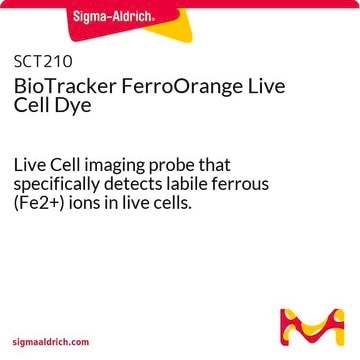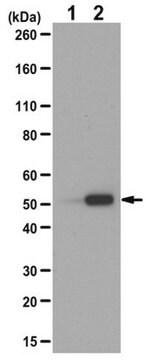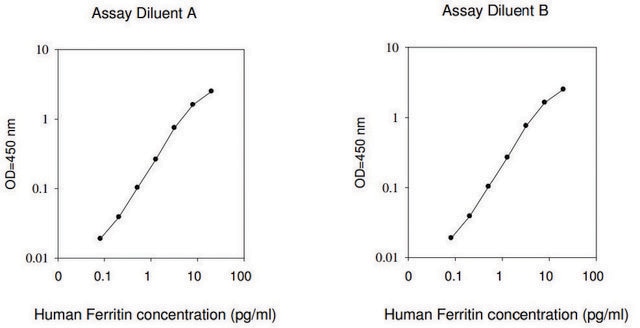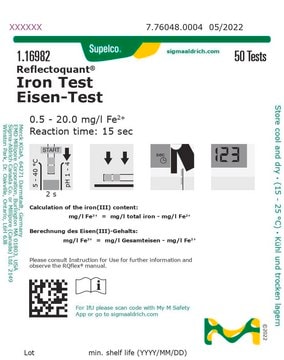If this product has an expiration or retest date, it will be shown on the Certificate of Analysis (COA, CofA). If there is no retest or expiration date listed on the product's COA, we do not have suitable stability data to determine a shelf life. For these products, the only date on the COA will be the release date; a retest, expiration, or use-by-date will not be displayed.
For all products, we recommend handling per defined conditions as printed in our product literature and website product descriptions. We recommend that products should be routinely inspected by customers to ensure they perform as expected.
For products without retest or expiration dates, our standard warranty of 1 year from the date of shipment is applicable.
For more information, please refer to the Product Dating Information document: https://www.sigmaaldrich.com/deepweb/assets/sigmaaldrich/marketing/global/documents/449/386/product-dating-information-mk.pdf
MAK025
Iron Assay Kit
sufficient for 100 colorimetric tests
About This Item
Produits recommandés
Utilisation
sufficient for 100 colorimetric tests
Application(s)
cosmetics
food and beverages
Méthode de détection
colorimetric
Maladie(s) pertinente(s)
cancer; hematological disorder
Température de stockage
−20°C
Description générale
Application
Adéquation
Principe
Notes préparatoires
Produit(s) apparenté(s)
Mention d'avertissement
Warning
Mentions de danger
Conseils de prudence
Classification des risques
Eye Irrit. 2 - Met. Corr. 1 - Skin Irrit. 2
Code de la classe de stockage
8A - Combustible corrosive hazardous materials
Faites votre choix parmi les versions les plus récentes :
Certificats d'analyse (COA)
Vous ne trouvez pas la bonne version ?
Si vous avez besoin d'une version particulière, vous pouvez rechercher un certificat spécifique par le numéro de lot.
Déjà en possession de ce produit ?
Retrouvez la documentation relative aux produits que vous avez récemment achetés dans la Bibliothèque de documents.
Les clients ont également consulté
-
How can I determine the shelf life / expiration / retest date of this product?
1 réponse-
Utile ?
-
-
How is shipping temperature determined? And how is it related to the product storage temperature?
1 réponse-
Products may be shipped at a different temperature than the recommended long-term storage temperature. If the product quality is sensitive to short-term exposure to conditions other than the recommended long-term storage, it will be shipped on wet or dry-ice. If the product quality is NOT affected by short-term exposure to conditions other than the recommended long-term storage, it will be shipped at ambient temperature. As shipping routes are configured for minimum transit times, shipping at ambient temperature helps control shipping costs for our customers. For more information, please refer to the Storage and Transport Conditions document: https://www.sigmaaldrich.com/deepweb/assets/sigmaaldrich/marketing/global/documents/316/622/storage-transport-conditions-mk.pdf
Utile ?
-
-
Is the MAK025 Iron Assay Kit able to detect iron when it is present as ferric ammonium citrate in Mycobacterium tuberculosis 7H9 broth?
1 réponse-
In the assay, ferric carrier protein will release ferric ions into the solution when introduced to an acidic buffer. Once these ions are reduced to the ferrous form (Fe2+), they react with Ferene S, forming a stable colored complex detectable at an absorbance of 593 nm. Consequently, the kit should theoretically be capable of detecting iron in the form of ferric ammonium citrate. It is designed to measure iron within a linear range of 0.4 to 10 nmol, or 8 µM to 200 µM iron concentration in various samples.
It should be noted that the concentration of ferric ammonium citrate in Middlebrook 7H9 broth is generally 0.04 g/L, equivalent to 150 µmol/liter.Utile ?
-
-
Can this assay quantify iron contained within heme directly, or is it necessary to first release the iron from the heme for detection?
1 réponse-
Iron attached to carrier proteins like transferrin can be quantified with the kit because these proteins will release ferric ions into the solution within an acidic buffer. However, proteins that contain iron, such as those in heme, do not dissociate in this way. As a result, it is not anticipated that iron bound within heme can be measured using this particular assay kit.
Utile ?
-
-
How can the detection of iron in mouse brain homogenate be improved when using the assay kit, given that current measurements are near or below the detection limit?
1 réponse-
It is suggested to reduce the quantity of homogenization buffer. For effective homogenization and cell lysis, employing a dounce homogenizer or applying mild sonication is recommended. Furthermore, using a greater quantity of tissue with a reduced amount of buffer might prove to be beneficial.
Utile ?
-
-
To homogenize mouse cells to evaluate iron content with "Iron assay kit", which type of homogenization method is best suited? Thanks
1 réponse-
It is recommended to use a Dounce homogenizer, not a "French press" or sonicator, or detergents or beads, for homogenization.
Utile ?
-
-
What is the range of iron concentration that can be measured?
1 réponse-
The detection range of this kit is 8 µM - 200 µM.
Utile ?
-
Filtres actifs
Notre équipe de scientifiques dispose d'une expérience dans tous les secteurs de la recherche, notamment en sciences de la vie, science des matériaux, synthèse chimique, chromatographie, analyse et dans de nombreux autres domaines..
Contacter notre Service technique








